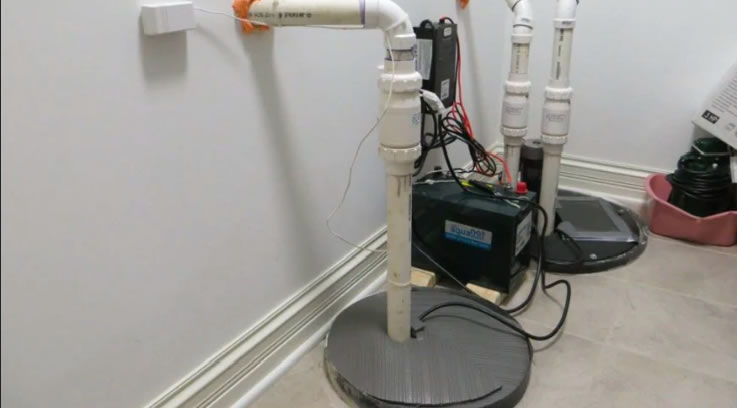Call This Monday to Get $50 OFF
Call us today
214-943-2424

If you live in an area that receives heavy rainfall, you will probably be prepared for the rainy season when it's getting closer. Sump pumps are one of the devices that keep your home safe from the heavy rain season, and it does this by pumping out the water in the basement when it reaches a certain level through a discharge tube. Unfortunately, if your sump pump fails during a huge storm, the probability of your basement flooding in minutes is very high. So, it is very important to ensure your sump pump is functional. Whether your sump pump is broken and you need a new one, or you just moved to a new city and need a new pump, here's your guide. There is more than one type of sump pump, and choosing it carefully is important.
The typical pumps seen in many homes are primary sump pumps. They stop floods by pumping seepage water out of your basement. They may pump up to several thousand gallons every hour to keep your home dry.
The most common types of sump pumps are pedestal or submersible ones. A pedestal pump has its engine on a shaft elevated above the sump and out of the water. These are typically a less expensive choice. However, since the water inside the sump pump cannot cool them, they have a higher risk of overheating. They run a higher risk of overheating during heavy use because the water in the sump does not cool them.
Additionally, since it's not made for conditions with water, it's important to prevent them from getting wet. Otherwise, the motor can be significantly damaged. They are ideal for smaller sump pump pits because of their long, thin stature, which allows them to fit where a standard submersible sump pump wouldn't.
Being opposite to pedestal sump pumps, submersible sump pumps are completely submerged in the bottom of the pit. In contrast to pedestal pumps, their motors are completely covered to stand water. Even though they seem more expensive in the initial buying time, due to their longer lifespan and performance, they are more cost-efficient in the long term. Their lifespan is usually around ten years.
Heavy storms and power outages usually go hand in hand. Luckily, a type of sump pump will work even when your electricity is gone and can protect your home. That is called a battery backup sump pump. These pumps can drain water for at least 12 hours without the need for any recharge.
Every homeowner's need for a sump pump is different. So, as a homeowner, you should sort out your priorities and decide which kind of sump pump would be the best for you. After choosing your ideal sump pump, it's time to install it. Luckily, the professional plumbers of Texas Rooter offer various plumbing services, including sump pump installation. Call us today to learn more about our services.
We all know that extremely cold weather can lead to frozen and burst pipes.…
Read MoreHave you ever walked into your basement after a heavy rain and found water everywhere?…
Read MoreHave you ever been startled by a strange noise coming from your water heater? Those…
Read MoreWater isn't always as pure as it seems. Contaminants—from harmless minerals to potentially harmful chemicals—can…
Read MoreImagine you’re hosting a backyard barbecue in sunny Texas when you…
Read More